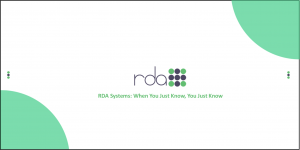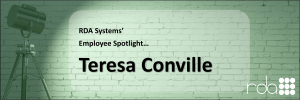As organizations continue to accumulate vast amounts of data, it is increasingly important to ensure that the data is accurate and reliable.
Data cleaning, also known as data purging or data scrubbing, is the process of identifying and correcting errors, inconsistencies, and inaccuracies in datasets. By performing data cleaning, organizations can improve the quality of their data, which can lead to better decision-making and more efficient operations.
Benefits of Maintaining Clean Data
Before getting to the how-to of data cleaning, it’s important to understand the ‘why.’ There are numerous advantages to maintaining clean data.
Removal of errors and inconsistencies
An annual (or more frequent) cleaning and purging of data removes major errors and inconsistencies that are inevitable when multiple sources of data are being pulled into one dataset. This is especially true in today’s world, where organizations gather data from a wide range of sources, including social media, customer feedback, and website analytics.
Without proper data cleaning, these different sources of data can easily lead to data duplication, incorrect formatting, contradictory data, and other issues that can compromise its accuracy—and therefore the reliability of analyses performed using the data.
A side benefit of working with data that’s free from errors and inconsistencies is a reduced likelihood of those problems leading to frustration among employees. By ensuring that your data is accurate and reliable, you can create a more positive work environment and boost productivity.
Increased efficiency and productivity
With accurate and concise datasets, you can quickly get what you need from the data available to you. This can save time and resources, especially when dealing with large datasets.
Improved customer satisfaction
When data is inaccurate or incomplete, it can lead to errors in customer records, incorrect billing, and other issues that can negatively affect customer experience. By cleaning up your data, you can ensure that customer records are accurate and up to date, which can lead to happier customers and better customer retention.
Better understanding of data functions
Data cleaning allows you to map different data functions and lets your data work for you. Accurate and reliable data is essential for making informed decisions and identifying areas for improvement. By cleaning up your data, you can gain a better understanding of your data sources and ensure that your data is aligned with your business goals.
Techniques and Tools for Data Cleaning
There are several techniques and tools that organizations can use to perform data cleaning. One such technique is data scrubbing, which involves identifying and removing irrelevant or duplicate data. This can be done manually or through automated software, depending on the size of the dataset.
Another technique is data normalization, which involves converting data into a consistent format. This can help ensure that all data is structured in the same way and can be easily analyzed.
Organizations can also use specialized data cleaning software to help automate the process. For example, Sisense is a data analytics platform that includes built-in data cleaning tools. These tools allow businesses to automate the process of identifying and correcting errors and inconsistencies in their data. Similarly, Geotab, a fleet management software provider, emphasizes the importance of data cleaning in maintaining accurate and reliable data in their industry.
How to Clean Your Data (Step-by-Step)
For a quick overview of the process of cleaning and organizing your dataset, first have a look at the data cleaning tutorial offered by Career Foundry. The following is a step-by-step guide to cleaning your data effectively:
Step 1: Remove unwanted data points. Get rid of unnecessary data, such as duplicates and irrelevant information.
Step 2: Correct structural errors. This includes typos, inconsistent capitalization, and incorrect categories. These issues are often caused by human error during the data entry phase. Products like RDA’s School District Suite and Municipal Suite help eliminate this problem by taking manual data entry off HR and Payroll’s plate.
Step 3: Standardize your data. Follow the same rules for every cell type, including capitalization, units of measurement, and the format of calendar dates. This is also a good time to eliminate syntax errors by ensuring that numbers are appropriately stored as numerical data, text as text input, dates as dates, and so on.
Step 4: Check for outliers. If they’re found to be erroneous, remove them. You might also remove them for certain types of data models and analyses where they could skew the results.
Step 5: Correct contradictory or incompatible data. CareerFoundry offers two excellent examples: “a pupil’s grade score being associated with a field that only allows options for ‘pass’ and ‘fail,’ or an employee’s taxes being greater than their total salary.”
Step 6: Deal with missing data. Flag the data as missing and ensure that empty fields have the same value.
Bonus: RDA Data Purging
RDA takes many steps to check and ensure that data is clean when it enters the RDA platform. Every time a user hits the save button, numerous data validations take place. If erroneous data is input, the validations produce Save Warnings or Save Errors. Save Warnings alert the user that something may be amiss. You can proceed if you like. Save Error alerts will not allow a user to save erroneous data.
Data cleaning is a crucial process for any organization that deals with large amounts of data. By identifying and correcting errors, inconsistencies, and inaccuracies in datasets, organizations can improve the quality of their data and make better-informed decisions. This can lead to increased efficiency, happier customers, and a more positive work environment.
With the right techniques and tools, organizations can easily perform data cleaning and ensure that their data is accurate, reliable, and aligned with their business goals.
For more information, tools, and guidance for performing a data purge for your organization, contact the helpful team at RDA Systems.






1 thought on “The Unrealized Value of Maintaining Clean Data”